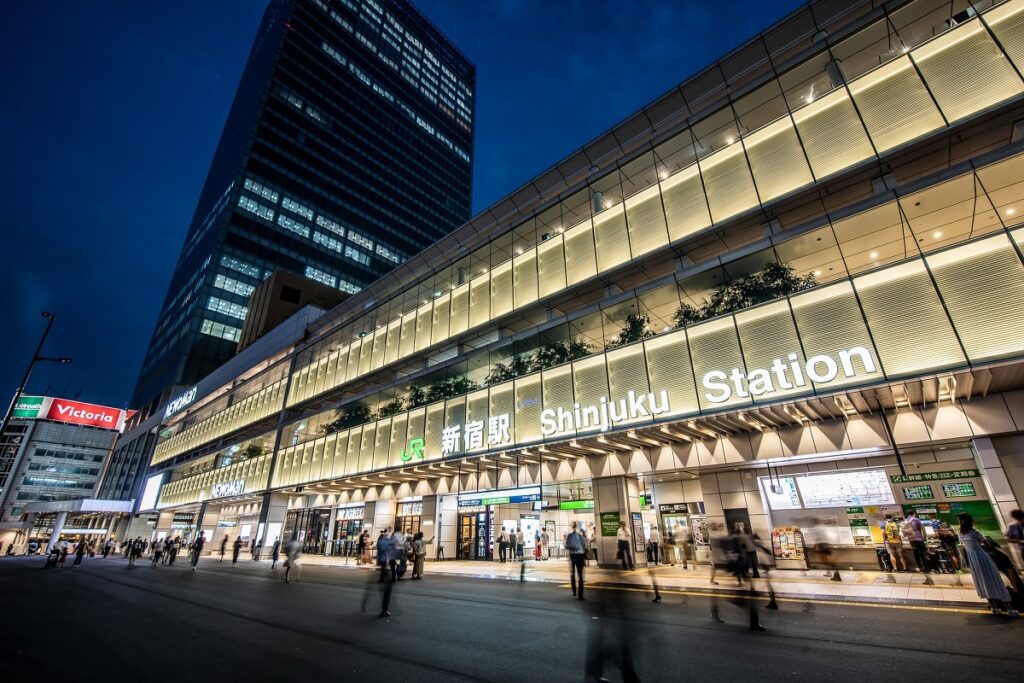[ad_1]
They’re critical points of transit for hundreds of thousands of people every day in Tokyo. So why are they so dang hard to use? A recent deep dive into the stations’ history says you can blame it on history and necessity.
Shinjuku Station isn’t just “a busy station” – it’s the busiest station in the Japan Railways East (JR East) system. Some 602,000 people passed through the building on any given day in 2022, accounting for 15% of all JR traffic. The next closest station was the equally labyrinthine Ikebukuro, which clocked almost 459,000 people.
Shibuya didn’t rival Shinjuku in terms of traffic in 2022. Ikebukuro, Tokyo, and Yokohama all surpassed it. But it still clocked an amazing 292,631 users.
However, remember that Japan only opened up to tourism again in October 2022. So these numbers don’t reflect tourists. Rolling back to 2019, Shinjuku saw 775,386 visitors, while Shibuya enjoyed a massive 366,128.
(Fun fact: Shibuya didn’t even make the top five stations that year. Shinagawa beat it out – which makes sense given that Shinagawa is also a major tourist nexus point.)
Despite the stations’ heavy usage, Shinjuku and Shibuya are considered the two most complex and hard-to-use stations in Tokyo. And that’s the opinion of locals who use them every day!
A 2021 report by ITMedia Lab placed Shinjuku and Shibuya 1st and 2nd, respectively, in terms of how difficult it is to transfer trains. Shinjuku’s underground labyrinth is so hard to navigate some have labeled it the “Dungeon Station”. And transfers at Shinjuku are so difficult that many don’t know where to go even after looking at a map.
Advertisements
Shinjuku: A small station grows up

Not every station is the nightmare that Shinjuku and Shibuya are. As ITMedia Business notes, riders praise Shinagawa Station for its simple, easy-to-use design. It’s one reason JR East is moving towards making Shinagawa the base station for bullet train and other services going forward.
So what the hell happened to Shinjuku and Shibuya?
In Shinjuku’s case, the answer is: time. Home of Tokyo’s first private rail car, Shinjuku opened in 1885. Its first line, the famous Yamanote, had a single track. Its second line, to Tachikawa, opened in 1889.
But then the city sort of grew up around Shinjuku. And so did the number of lines into the station. The lines that would become today’s Saikyo and Shonan Shinjuku lines soon reached the station, followed by the busy Odakyu and Keio lines.
After World War II, the station only kept growing. The Keio line shifted to the station’s west entrance and, along with the Odakyu, moved underground. More lines moved in and a number of nearby stations also named “Shinjuku” mushroomed into existence. Odakyu and Keio built department stores around their lines, making the station even larger and more complicated.
Shinjuku’s unplanned sprawl stands in contrast to both Shinagawa as well as Tokyo Station. Designed in 1914 to serve specifically as a hub, Tokoy station opened with four platforms and eight lines. Despite growing more complicated, it’s managed to remain easy to use.
Shibuya Station: Time + retail = chaos

So what’s the deal with Shibuya, then?
In an interesting analogy, ITMedia’s Kobayashi Takuya compares Shibuya to the modern practice of Agile software development. “System development and progression happens in response to the situation and via repeated trial and error.”
Like Shinjuku, Shibuya serves as home to numerous train companies and their lines – JR East, Tokyu, Tokyo Metro, and Keio. Many of these lines started as their own separate stations, while others that started at street level were moved underground as Tokyo grew and evolved.
Additionally, Tokyu Group head Goto Keida (五島慶太) was a huge champion of embedding retail in the group’s stations. The Tokyu group continues to push that philosophy to this day. Shibuya Station is more than just a train station – it’s also a sprawling, often confusing network of department stores and food courts.
Shibuya is even more confusing now that it’s under intense construction. Tokyu’s last redevelopment project, Shibuya Scramble Square, won’t see its phase 2 end until 2027.
Will Shibuya Station be any easier to navigate after the dust settles? If history is any indicator, then…no, probably not. As Kobayashi wrote, “Shibuya’s trademark isn’t simply complexity, but complexity through change.”
What to read next
Three Japanese Train Station Names That Even Native Speakers Find Hard
Sources
各駅の乗車人員 2022年度. JR East
乗り換えが複雑な「首都圏の駅」ランキングTOP15! 「新宿駅」を抑えた1位は?【2021年投票結果】. ITMedia Netlab
「新宿駅」と「渋谷駅」はなぜ複雑になったのか. ITMedia Business Online
[ad_2]
Source link



